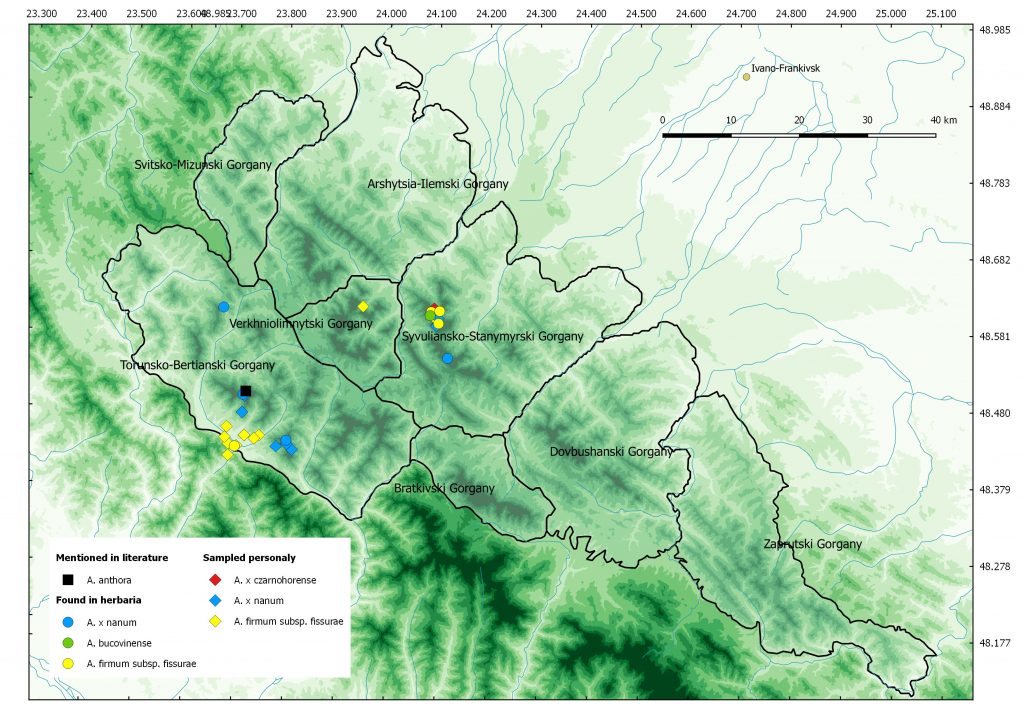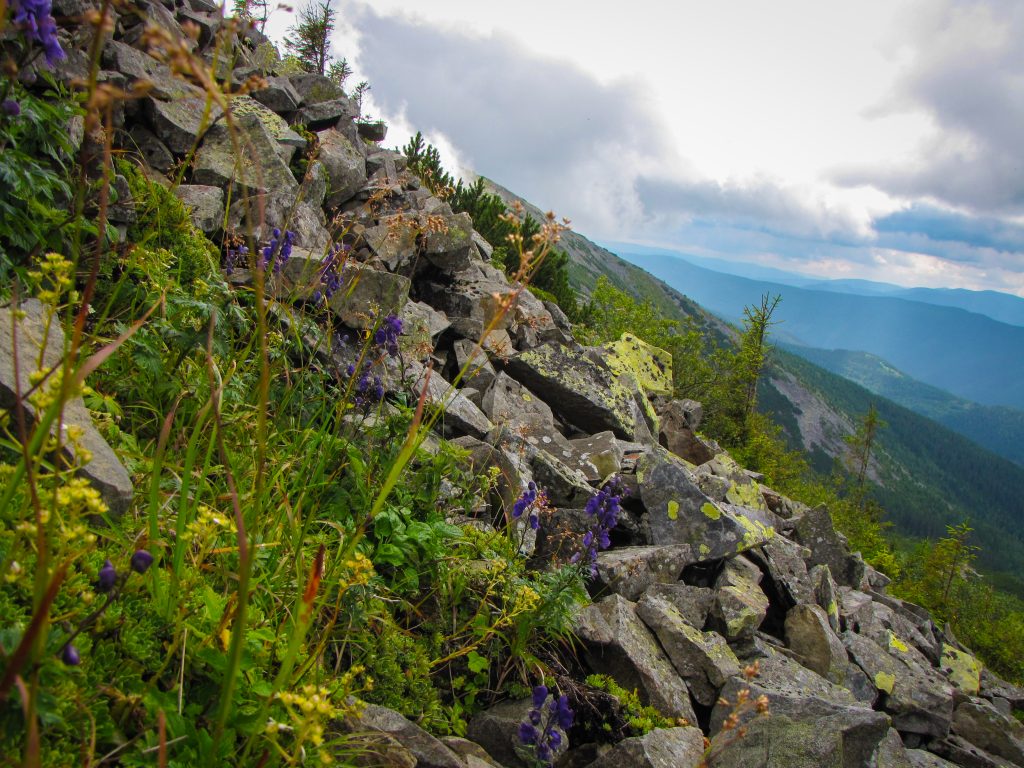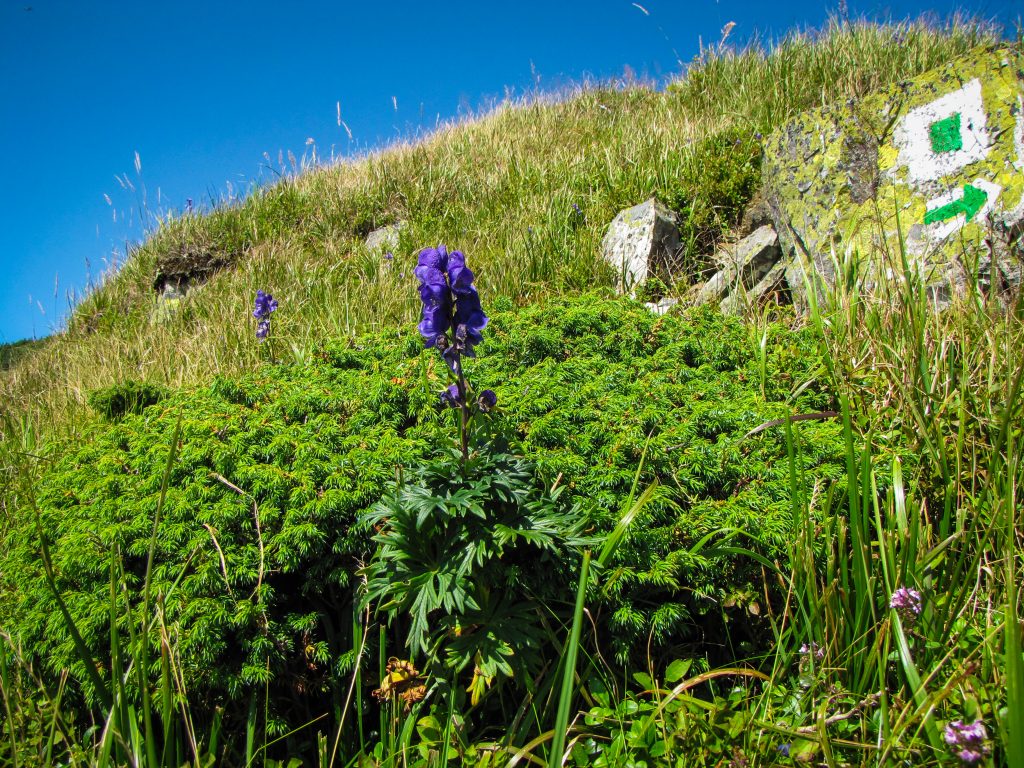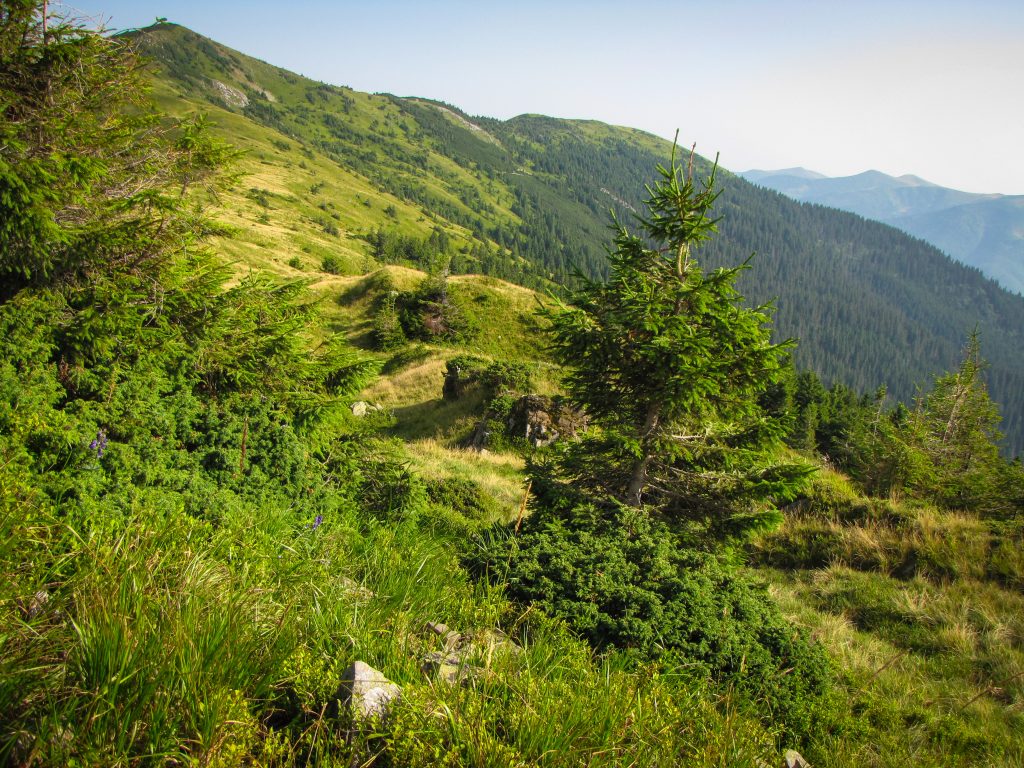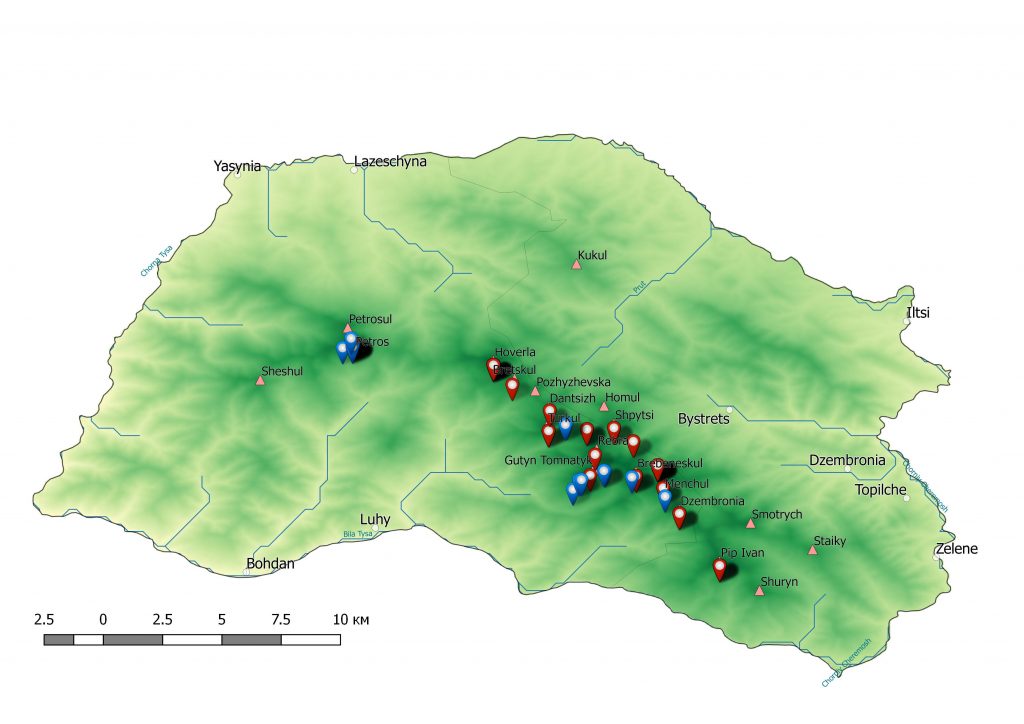Ecological preferences: Heliophytes, rarely – scio-heliophytes; mesophytes or meso-xerophytes, rarely – hygro-mesophytes; acidophils, rarely – peracidophils or subacidophils.
Distribution and habitats in Ukrainian Carpathians: The species occurs very often in Chornohora Mts., but it also grows in Svydovets, Gorgany, Polonynas and Marmarosh Mts. It very often occurs in mixed populations with A. firmum, A. × nanum and sometimes – with A. bucovinense. It is usually related to alpine and subalpine belts, but also occurs in higher montane belt. These plants grow on stone screes, in cracks of the rocks, in natural depressions and low cavities, and sometimes occur near the streams and high-mountain lakes. The species take a part in Pulmonario-Alnetum viridis, Juniperetum sibiricae, Pinetum mughi, Caricetum sempervirentis, Aconitetum firmi, Primulo- Caricetum curvulae, and Poo-Deschampsietum communities.
Distribution and habitats in Chornogora: In Chornogora Mts. the species has a center of distribution and is represented here by five main local mixed populations in good and prosperous condition – on mountains Petros, Gutyn- Tomnatyk, Brebeneskul, Menchul, and near the lake Brebeneskul. The most of plants are in pregenerative and generative stages; therefore vitality of these populations is normal. In general A. × czarnohorense here includes about 2000 plants which cover more than 5 km2. In Chornohora this species is registered in all of mentioned above communities on cambic leptosols, umbric or mоllic gleysols and leptic cambisols.
Distribution and habitats in Gorgany: In Gorgany Mts. A. × czarnohorense was observed before only in subalpine belt on Mt. Vysoka and Mt. Igrovets (Syvuliansko-Stanymyrski Gorgany), but in 2017 it was rediscovered also in subalpine meadows of Strymba Mt. in Torunsko-Bertianski Gorgany. So at the moment there are known only two main populations of this species, holding together less than 1000 plants of mostly generative representatives. The population from Syvuliansko-Stanymyrski Gorgany is in critical situation due to overgrowing by shrubs and intensive trampling by tourists, as a result of this the population is highly fragmented. The condition of other population is little better, since there no so much tourists, but there is intensive grazing. The main communities of A. × czarnohorense there are Poo-Deschampsietum and Polygalo-Nardetum.
Threats: This species is represented on Chornogora in enough amounts but nevertheless it needs a protection because it grows mostly on the touristic paths and near the camping places. Among other threats the overgrowing of habitats by shrubs. In Ukrainian Carpathians it has VU category.
